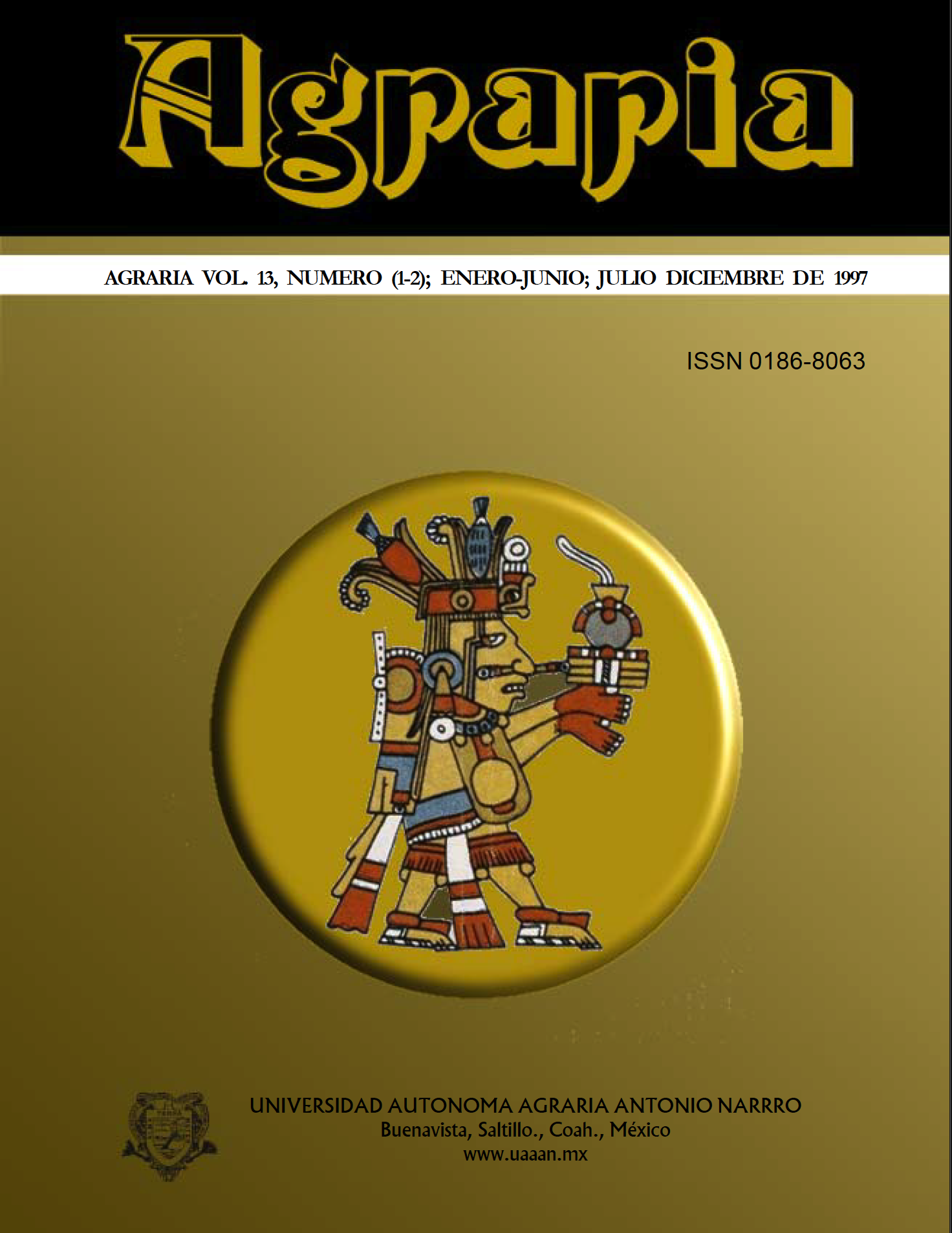Producción y valor proteínico de la harina de larvas de Musca doméstica L. (DIPTERA: MUSCIDAE) desarrolladas en excremento de cerdo
DOI:
https://doi.org/10.59741/agraria.v13i1-2.239Keywords:
house fly, masive culture, excrement, aminograms, flour, chemical proximate analysis, pigAbstract
The objetive of this research was to develop a practical procedure in order to make flour from house flies (Musca domestica L.) larvi as a protein source. This flour was obtained from pig excrement biotransformation. Different house flies nursing techniques were carried out through the increase of native populations, intensive adult and larvi nursing with the help (by means) of layers of pig excrement exposed to a natural environment. 400 ml of fly eggs were collected and inoculated and at the end/ we obtained 43.200 kg of fly larvi, which gave us a net yield of 11.646 kg of flour. The results from a bromatological analysis were as follows: 49.18 % of protein, 8.16% of fiber and 25.90 % of fat. The protein aminoacids showed an excellent balance, with high values in glycine (10.74%), proline (11.34 %) and alanine (9.49 %) The sulfured aminoacids, like metionine and lycine showed accepted levels (2.18% and 1.63 %) respectively.
Downloads
References
Auxtel, R.C. 1961. New records of North America Macrochelidae (Acarinae: Mesostigmata) and their predation rates on the house fly. An Entomol. Am. Soc. (54): 748. DOI: https://doi.org/10.1093/aesa/54.5.748
Calvert, C.C., R.D. Martin, N.O. Morgan. 1969. House fly pupal a food poultry. Jour. Econ. Entomol. 62(4): 938-939. DOI: https://doi.org/10.1093/jee/62.4.938
Carlson, D.A., M.S. Mayer, D.L. Silhacek, J.D. James, B. Morton and B.A. Bierl. 1971. Sex Attractant pheromones of the house fly: isolation, identification and syntesis, Science. (174): 76-78. DOI: https://doi.org/10.1126/science.174.4004.76
Gaona, G.G., H.E. González, V.M. Laras. 1991. Evaluación experimental de dietas balanceadas para el cultivo del camarón blanco Penaeus vannamei Boone utilizando harina de insectos como ingrediente protéico. Biotman III (2):33-45.
Legner, E.F., G.S. Olton, R.E. Eastwood and E.J. Cietrick. 1975. Seasonal density distribution and interactions of predatory and scavenger arthropods in acumulatting poultry wastes in coastal and interior Southern California. Entomophaga (20): 269-283. DOI: https://doi.org/10.1007/BF02371952
Loomis, E.C., A.S. Deal and W.R. Bowen. 1968. Hymenopterous parasitism in the little House fly. Jour. Econ. Entomol. (61): 115-117. DOI: https://doi.org/10.1093/jee/61.4.1105
Peña, G. H. 1982. Determinación de las cualidades alimenticias de la pupa de la mosca casera Musca domestica L. (Diptera:Muscidae). Tesis de Licenciatura. UAAAN. Saltillo, Coahuila. (45pp).
Ramos, E.J., M. J. Pino. 1981. Digestibilidad in-vitro de algunos insectos comestibles en México. Folia Ent. Mex. (49): 141-154.
Ramos, E.J., M.J. Pino., M. Márquez., F. Rincón., V.M. Alvarado., P.E. Escamilla y R. Bourges. 1984. Protein content of some edible insects in México. Jour. Ethnobiology.4 (1): 61-72.
West, L.S. 1951. In: The house fly: its natural history, medical importance and control. Comstock Publ. Co. Itahaca, N.Y. 584 p.
Wigglesworth, V.B. 1972. The principles of insect physiology. Chapman and Hall. London. 827 p. DOI: https://doi.org/10.1007/978-94-009-5973-6
Downloads
Published
Issue
Section
License

This work is licensed under a Creative Commons Attribution-ShareAlike 4.0 International License.
How to Cite
PLUMX Metrics

